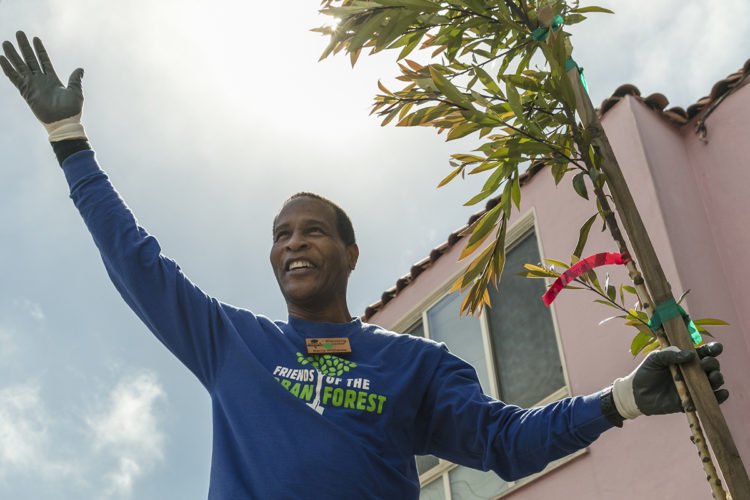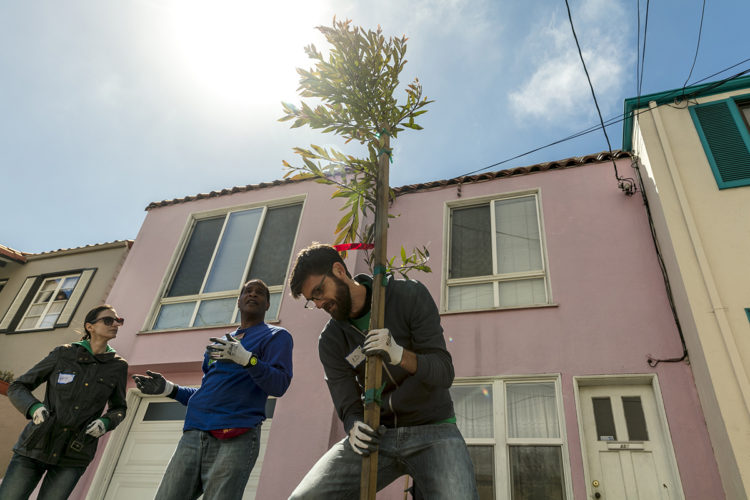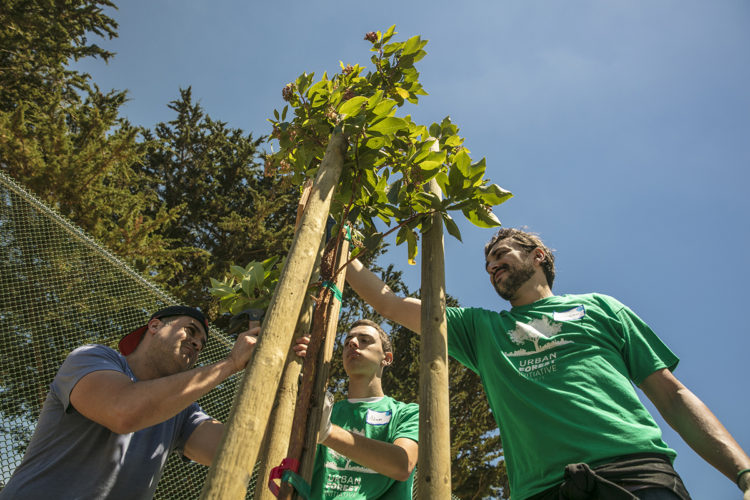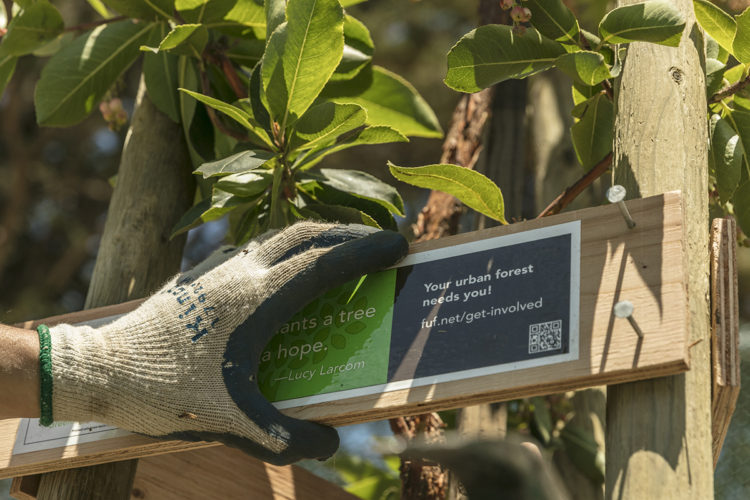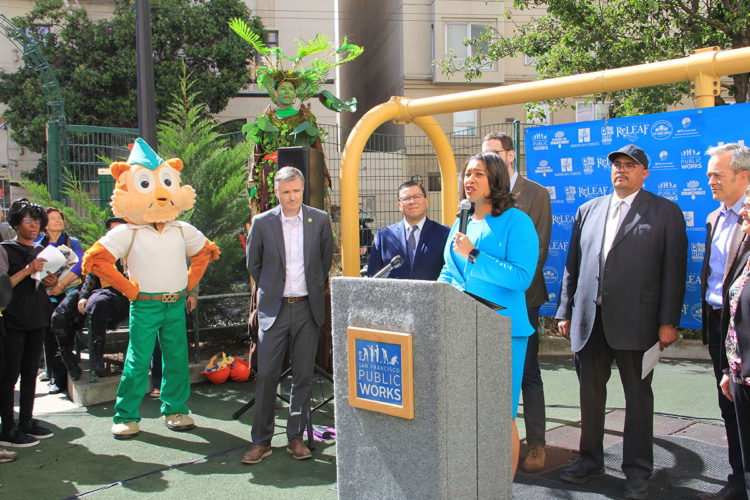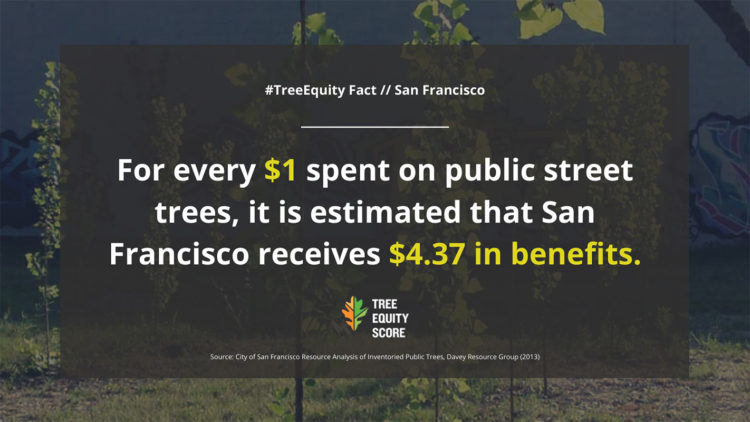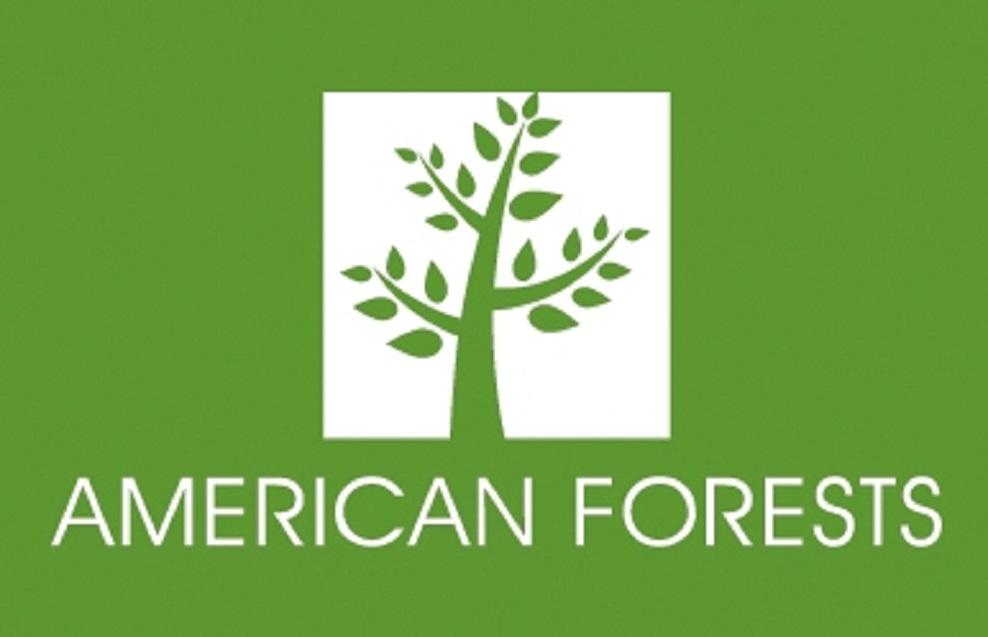
American Forests
2022 – $25,000 Cool Corridors
2021 – $20,000 Tree Equity
By piloting a new “Tree Equity Score” tool in the Bay Area, Seed Fund has laid the foundation for what has potential to become a revolution in greening cities nationwide. In part, Tree Equity Score is a way to build broader awareness that urban tree canopy is too often a map of income and ethnicity; as climate change worsens trees are becoming a critical life-saving and quality of life infrastructure. It is also a state-of-the-art platform that grounds this awareness in a simple metric, providing governors, mayors, city agencies, frontline organizations and residents a new way to mobilize action, attract resources, and track progress toward achieving Tree Equity in every neighborhood.
In 2019, the Doris Duke Charitable Foundation funded American Forests to develop some sort of a national GIS-based decision support tool to address this issue. Having pioneered such technology in the 1990s and 2000s, staff were all too aware that the field of urban conservation had become saturated with sophisticated mapping tools. Yet, that data was still not packaged in a way that told an effective story to generate and maintain momentum at the scale needed to substantively improve green infrastructure where it is most needed.
Seed Fund’s support to pilot a concept for a 0-100 scoring index down to the neighborhood level proved to be the perfect laboratory through which to develop and ground-truth an idea for a tool that could define a new, equity-focused narrative structure for urban forestry.
The first step was to develop the critical underlying methodology to measure how well a neighborhood or municipality is ensuring the benefits of urban tree canopy are reaching populations that are most vulnerable to climate change and public health impacts. The final factors, weighted equally against tree canopy and development density, were designed to be compared within a metro area but sought to avoid comparisons between different cities in vastly different ecoregions across the country. These datasets include:
- Income: Percent of the population below 200 percent of poverty;
- Employment: Unemployment rate below regional average;
- Race: Percent of the population that is not white non-Hispanic;
- Age Dependency: Percent of the population under 18 and over 65 years old;
- Climate: Urban Heat Island severity using surface temperature;
- Health: A new layer that includes respiratory, heart disease, diabetes and hospitalizations.
If Tree Equity Score was to be a vehicle for a movement, it would need to provide more than a number. An online user experience that distills such complex information into a simple narrative for diverse audiences would be critical. The Bay Area pilot allowed for an iterative design process that included gathering feedback from local stakeholders like San Francisco’s Friends of the Urban Forest, Oakland’s urban forestry leaders and the California Urban Forestry Council. This process eventually led to what has become a very well-received mixture of design and function, as users have remarked at how much complex data is synthesized so clearly in the platform.
A mapping company called EarthDefine was so impressed with what they saw in the pilot phase they donated their own high-resolution national data layer to the project. Rather than spending a year developing such a layer, unique Tree Equity scores could be calculated and released in June, 2021 for more than 150,000 neighborhoods in 3,810 municipalities across all 486 urban areas of at least 50,000 people in the contiguous United States. These scores are accompanied by a suite of support tools. These include Vibrant Cities Lab’s Climate and Health Action Guide to help optimize urban forests to address climate change and public health issues, as well as the Community Assessment and Goal-Setting Tool that uses a separate gap score to guide stakeholders in structuring an inclusive, multi-organization urban forestry program.
Tree Equity Score and the critical issue it addresses has generated so much interest that American Forests was invited to co-author a New York Times data article to mark its nationwide release. With 522 million new trees needed to achieve Tree Equity nationwide, this level of visibility will be critical to contextualizing the large scale of investment needed from public, private and foundation sectors to grow this infrastructure that captures carbon, air pollution and storm water in the Bay Area and beyond.


